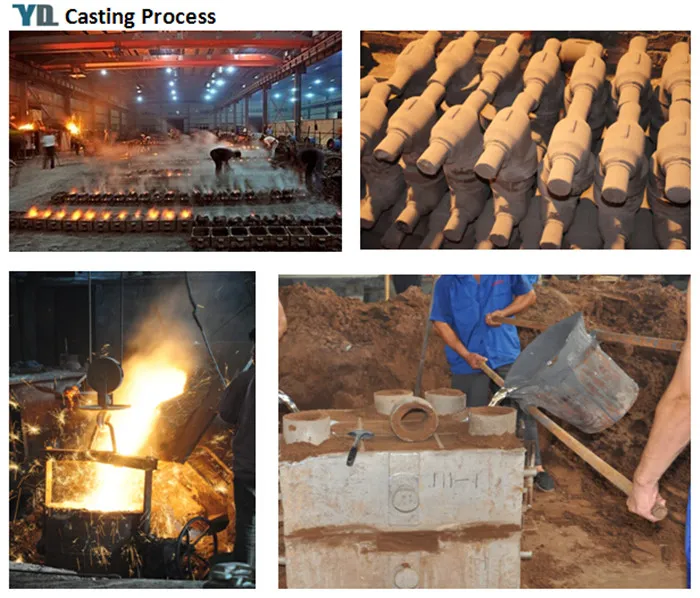Mobile:+86-311-808-126-83
Email:info@ydcastings.com
exhaust manifold with turbo
Understanding the Exhaust Manifold with Turbocharging
In the realm of automotive engineering, the significance of the exhaust manifold cannot be overstated, especially when combined with turbocharging technology. An exhaust manifold serves as a crucial component in the engine's exhaust system, collecting exhaust gases from the engine cylinders and directing them toward the turbocharger or the exhaust outlet. The integration of turbocharging technology with the exhaust manifold has revolutionized the performance of internal combustion engines, leading to increased efficiency and power output.
The Role of the Exhaust Manifold
The primary function of the exhaust manifold is to channel the exhaust gases produced during combustion away from the engine. Typically made from cast iron or stainless steel, it is designed to withstand high temperatures and pressures. A well-designed exhaust manifold enhances engine performance by ensuring that exhaust gases flow smoothly, reducing back pressure, and allowing the engine to breathe better. This flow is essential for efficient combustion, as it influences the engine's ability to draw in fresh air and expel exhaust gases.
Turbocharging A Game Changer
Turbocharging is a technology employed to enhance engine performance without increasing engine size. A turbocharger consists of a turbine and a compressor, both powered by exhaust gases. Utilizing the energy from the exhaust, the turbine spins and, in turn, drives the compressor to force more air into the engine's intake. This process leads to a denser air-fuel mixture, increasing the amount of power generated during combustion.
Combining the Two Exhaust Manifold and Turbocharger
exhaust manifold with turbo

When we combine the exhaust manifold with a turbocharger, we create a powerful synergy. A manifold designed specifically for turbocharging directs the exhaust gases to the turbo efficiently, minimizing energy loss. In a traditional aspirated engine, the exhaust manifold simply directs the gases to the atmosphere. However, in a turbocharged system, it must be engineered to feed the turbocharger optimally.
The design of the exhaust manifold plays a pivotal role in how quickly the turbo spools up. Short, streamlined runners can reduce the distance that exhaust gases must travel, allowing for quicker turbo response and improved throttle response. This diminishes turbo lag—the delay between pressing the accelerator and feeling the boost kick in—resulting in a more dynamic driving experience.
Tuning and Optimization
Engineers invest significant time in tuning and optimizing the exhaust manifold-turbocharger system to achieve the best performance characteristics. Factors such as runner length, diameter, and overall manifold design affect engine efficiency, turbo response, and power delivery. In many modern performance vehicles, aftermarket exhaust manifolds are available to maximize these benefits, as enthusiasts often seek ways to enhance performance beyond factory specifications.
Conclusion
The exhaust manifold with turbocharging is a testament to the advancements in automotive technology, offering a perfect blend of performance and efficiency. By facilitating the effective flow of exhaust gases to the turbocharger, an optimized exhaust manifold plays a fundamental role in unleashing the full potential of an engine. As vehicles continue to evolve and technology advances, the importance of these components in enhancing performance will undoubtedly remain significant. Enthusiasts and engineers alike must appreciate the intricate relationship between the exhaust manifold and turbocharging to truly understand how modern engines deliver power and efficiency.
-
Impeller Technology That Powers Precision in Pump SystemsNewsMay.22,2025
-
Valve Durability Begins with Quality Cast Iron ComponentsNewsMay.22,2025
-
Performance Cooling with Advanced Automobile Water Pump SolutionsNewsMay.22,2025
-
How Motor Housing and Oil Pans Shape Engine PerformanceNewsMay.22,2025
-
How Metal Castings Drive Modern Manufacturing EfficiencyNewsMay.22,2025
-
Exploring the Engineering Behind Valve Body CastingsNewsMay.22,2025











